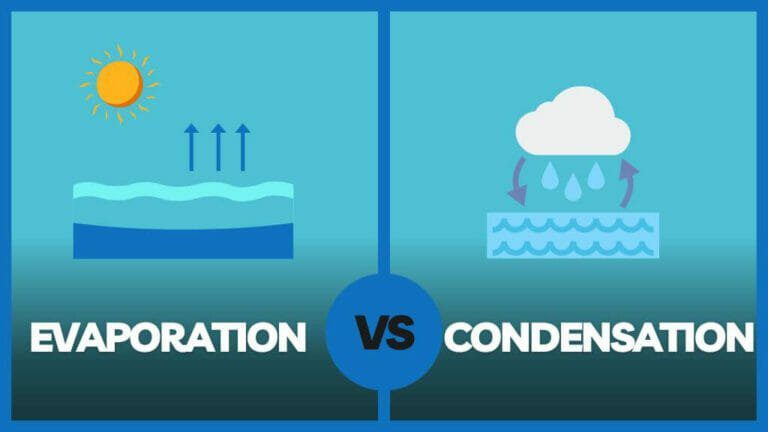The difference between evaporation and condensation mainly depends on the force of attraction between the particles.
As we are all aware, water is made up of molecules pulled close to one another.
However, the molecules are free to move on their own. The water molecules also possess some thermal energy produced by incredibly quick vibrations.
As a result, molecules near the surface vibrate or move with such a powerful force that they disperse into the atmosphere and turn into vapors. It is known as evaporation.
However, the other procedure is reversible; molecules can reassemble to create liquids. Condensation is the name for this process.
Let’s read the entire article to gain a better understanding.
Table of Contents
What is Evaporation?

Evaporation is the naturally occurring transition of high-energy molecules from the liquid surface to the vapor state.
Evaporation is simply the process of cooling a liquid below its boiling point so that it becomes a gas.
Remember that evaporation occurs at temperatures below the boiling point and is a surface phenomenon.
When the high-energy molecules contact the molecules on the liquid’s surface, they move at various velocities since none of the molecules or the liquid process energy equally at any temperature.
Evaporation occurs due to the surface molecules being able to resist the force of attraction and escape the liquid surface.
Does Gas Evaporate or Not?
Gas does evaporate and there are many factors which are affecting evaporation such as the temperature and humidity of the air, for example, can affect how quickly gasoline evaporates.
Is Water Evaporating a Chemical Change or a Physical Change?
This is one of the common questions: Is water evaporating a chemical change or physical change? The answer is it is a physical change. The example below will help you understand why it is a physical change.
Example:
In a pan, water is heated until it boils, at which point it turns to steam.
Due to the phase change, this is a physical change. Whether it is liquid or gaseous, the water is still water. Only the water molecules’ location and speed have shifted.
Factors Affecting Evaporation
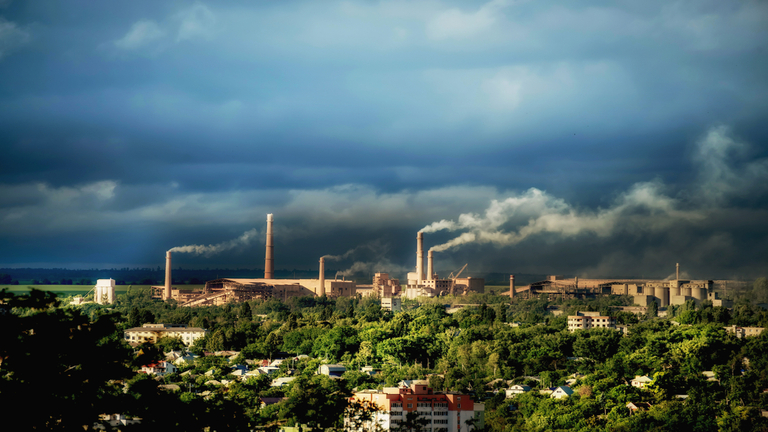
1. Intermolecular Force of Attraction
The factor affecting evaporation first is the intermolecular force of attraction.
To understand the effect of the intermolecular force of attraction on evaporation, let’s assume an experiment to pour some water into one plate and Ether it into another.
You’ll notice after a while that while the Ether evaporates quickly, the water does not soon evaporate. Because the water molecules are held together, it is difficult for many molecules to escape the liquid and defeat the force of attraction and surface into the container or become gaseous.
We conclude from this experiment that more force of attraction between molecules results in a slower rate of evaporation, while less force of attraction between molecules results in a greater or more rapid rate of evaporation.
On the other side, with the Ether having the less force of attraction and the more molecules easily overcoming the force of attraction and skipping into the gaseous state.
2. Temperature
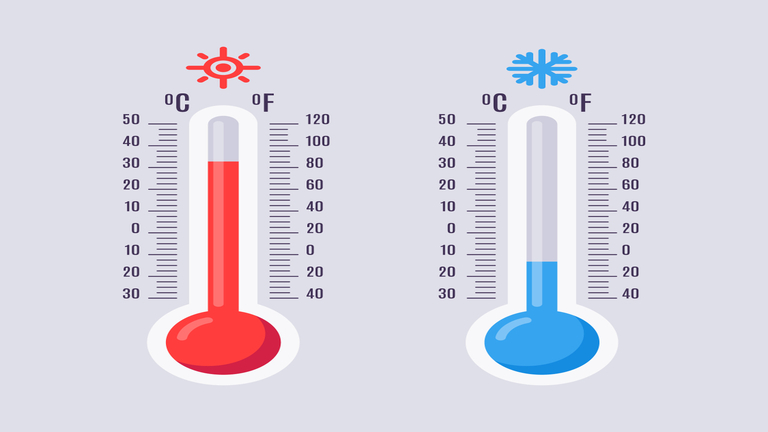
The rate of evaporation is also influenced by temperature. Suppose you notice that washcloths dry quickly on hot, sunny days. In that case, this is because the increased surface kinetic energy of the cloth allows more molecules to escape into the gaseous state, increasing the evaporation rate.
The rate of evaporation is slow during the winter because the temperature is relatively lower, and fewer molecules can increase their kinetic energy and transition to the gaseous form.
3. Surface Area
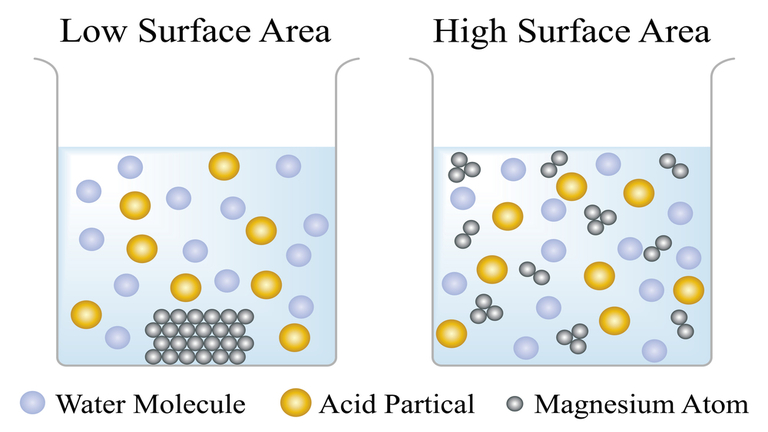
Evaporation also depends on surface area; the more surface area, the faster the evaporation. For instance, water in glass takes longer to evaporate than water spread out on the floor because more liquid molecules have a chance to escape from the larger surface area.
4. Humidity

Evaporation also depends on humidity. The relationship between humidity and evaporation rate is inverse. The rate of evaporation rises as the humidity falls.
Read more: What is the Difference Between Vaporization and Evaporation?
What is Condensation?

Condensation is the process of transforming water vapor into liquid form.
Condensation is the transformation of water from its gaseous or vaporous state into its liquid state. It typically occurs when warm air vapor comes into contact with a cold surface.
Condensation, however, can happen when a warm pocket of water vapor comes into contact with colder gases without a solid surface.
Example:
Morning Mist: Mist in the morning occurs when moisture in the air condenses on grass that has been chilled overnight.
Soda Can Droplets: Droplets on the soda can is another example of Condensation. Moisture from the warm outer air condenses outside the can due to its cool surface.
A blurred mirror: The same thing occurs when shower water condenses on a chilly mirror in your bathroom.
Cloud: Another example of Condensation without a surface is the sky’s clouds.
Cold glass: Heat is transmitted from the heated air to the cold glass when it comes into touch with each other. The water vapor near the cold glass loses energy due to the loss of heat in the surrounding atmosphere. The water vapor on the glass condenses into liquid once energy is lost.
Factors Affecting Condensation
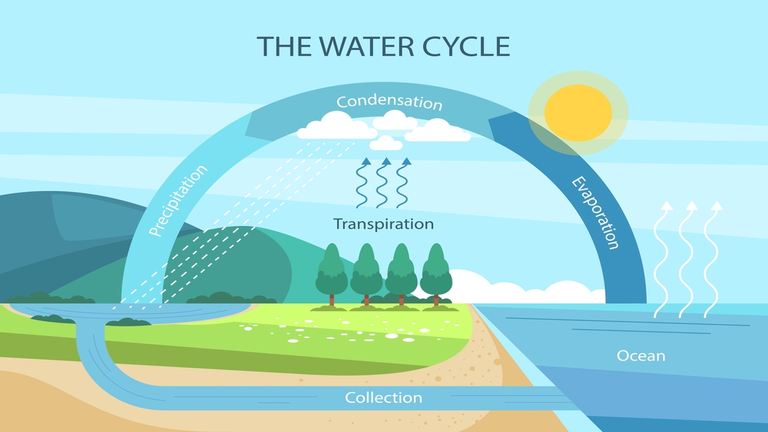
The three elements that contribute to condensation production are excess water vapour in the air, the air’s temperature, and air movement or circulation.
Warmer, moist air condenses when it comes into touch with cold surfaces like those found on windows, mirrors, and other accessories.
Excess moisture will be released as Condensation when the air temperature falls below its dew point.
Condensation occurs when warm air meets cold surfaces or when your home has an excessive amount of humidity.
Condensation Vs. Evaporation
The comparison between condensation vs. evaporation is below:
Evaporation is the process by which a liquid turns into a vapor, either as a result of the input of heat, or energy, or as a result of random changes in the velocity of molecules.
The exact opposite process is called condensation. There, the liquid’s vaporized molecules give up their energy and undergo a phase shift, returning to liquid form.
Differences Between Evaporation and Condensation

Similar to Condensation, evaporation is the process by which matter is changed from one condition to another. They are in opposition to one another otherwise.
Condensation and evaporation function in opposing ways.
The difference between evaporation and condensation is that condensation is the term changing a gas into a liquid or solid, whereas evaporation is the production of a gas from a liquid.
Another difference between evaporation and condensation is that evaporation is the process either as a result of the input of heat, or energy, or as a result of haphazard fluctuations in the velocity of molecules. a shift in phase.
The exact opposite process is called condensation. There, the liquid’s vaporized molecules give up their energy and change phases, returning to liquid.
Condensation is the process by which matter in the gaseous state changes into its condensed form, which is liquid or solid, as opposed to evaporation, which is the process by which matter in the liquid state changes into the gaseous state.
What are the Differences Between Evaporation and Condensation?
Highlighting the main difference between evaporation and condensation in the following table:
| Condensation | Evaporation |
|---|---|
| Condensation is a process of transforming water vapors into minute droplets of water. | Water turns into a vapor through the process of evaporation. |
| No matter the temperature, condensation involves a phase transition. | A liquid evaporates before it reaches its boiling point. |
| When the air temperature is lowered below the point of saturation, condensation develops on salt and on carbon particles, etc. | Any surface can experience evaporation at any time. Especially when it is windy, hot, and dry outside. |
| Energy is released during the condensation process. | When evaporation takes place, energy is consumed. |
Conclusion
Condensation and evaporation are states of transitions. The difference between evaporation and condensation is that during evaporation, a liquid turns into a gas. While condensation is the transformation of a gas into a liquid.
Wet garments dry on a laundry line due to evaporation and on a cold day, condensation is the cause of hazy windows.
Read more: What is the Difference Between Chlorophyll and Chloroplast?
Frequently Asked Questions
What occurs to the liquid water when it evaporates?
Evaporation results from the breakdown of the bonds that hold the water molecules together due to heat energy.
On the stove, adding heat to liquid water is what you do when you boil water. Because of the broken bonds, the additional heat causes the water to change from liquid state to a gaseous form.
What takes place when condensation forms close to the Earth’s surface?
Fog, dew, frost, and other weather phenomena can be seen when atmospheric water vapor condenses close to the earth’s surface.
What are the 4 stages of the water cycle?
The water cycle has four primary stages. Evaporation, condensation, precipitation, and collecting are the four stages.
Does evaporation cause water droplets?
A water droplet spends roughly 10 days in the atmosphere after it has evaporated. Water vapor starts to cool back down as it ascends higher in the atmosphere.

